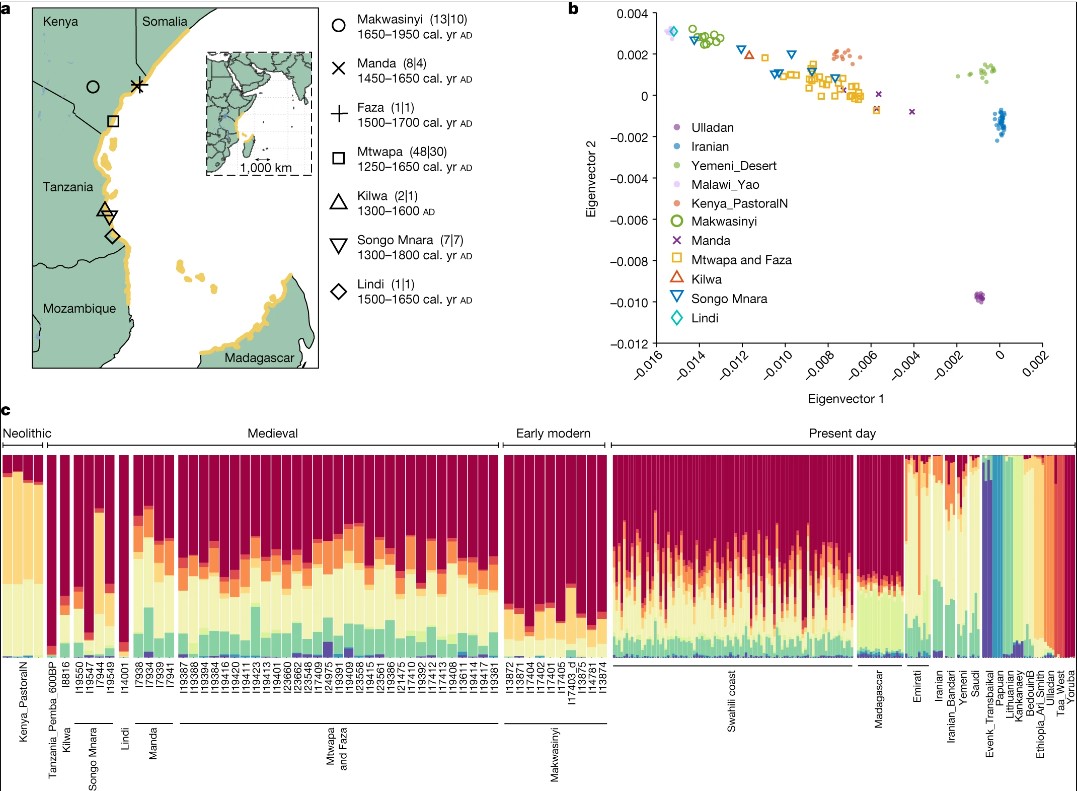Reformed J
VIP
The early Swahili study was finally published
Also, one of the guys from Songo Mnara (I7944, dated 1516-1667 AD) had majority Cushitic ancestry

The urban peoples of the Swahili coast traded across eastern Africa and the Indian Ocean and were among the first practitioners of Islam among sub-Saharan people1,2. The extent to which these early interactions between Africans and non-Africans were accompanied by genetic exchange remains unknown. Here we report ancient DNA data for 80 individuals from 6 medieval and early modern (AD 1250–1800) coastal towns and an inland town after AD 1650. More than half of the DNA of many of the individuals from coastal towns originates from primarily female ancestors from Africa, with a large proportion—and occasionally more than half—of the DNA coming from Asian ancestors. The Asian ancestry includes components associated with Persia and India, with 80–90% of the Asian DNA originating from Persian men. Peoples of African and Asian origins began to mix by about AD 1000, coinciding with the large-scale adoption of Islam. Before about AD 1500, the Southwest Asian ancestry was mainly Persian-related, consistent with the narrative of the Kilwa Chronicle, the oldest history told by people of the Swahili coast3. After this time, the sources of DNA became increasingly Arabian, consistent with evidence of growing interactions with southern Arabia4. Subsequent interactions with Asian and African people further changed the ancestry of present-day people of the Swahili coast in relation to the medieval individuals whose DNA we sequenced.
The Shirazi narrative wasn't a myth.Also, one of the guys from Songo Mnara (I7944, dated 1516-1667 AD) had majority Cushitic ancestry

Last edited:
